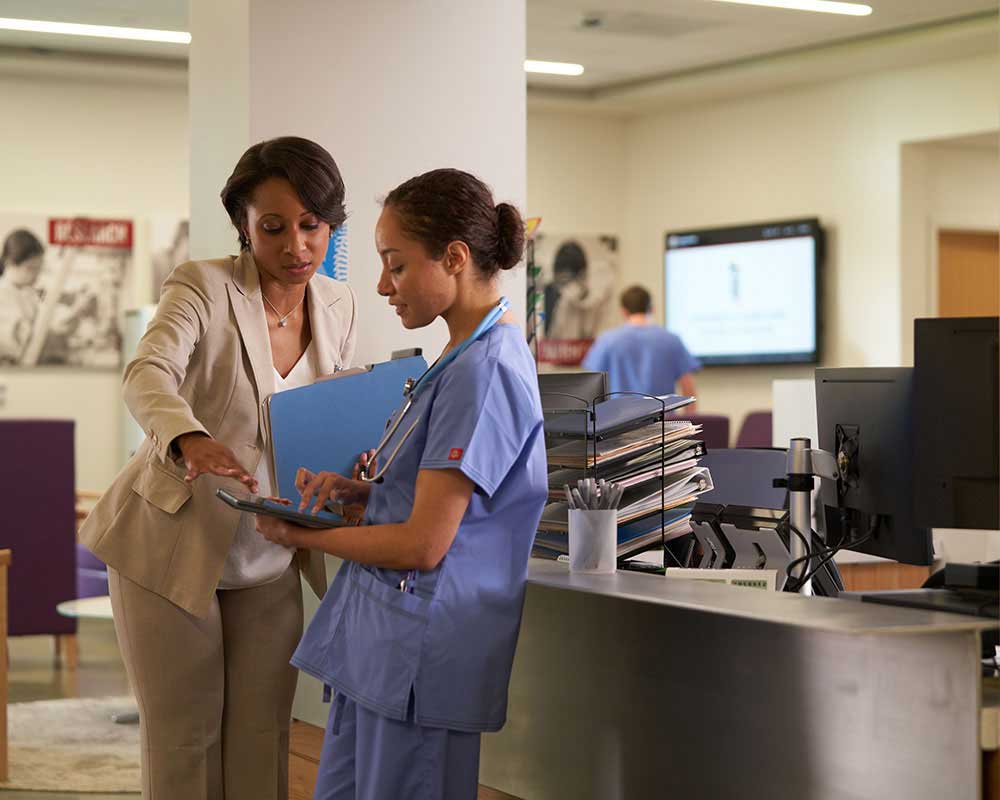The Future of Medical Administration: Patterns and Developments to See
Best Practices in Medical Administration for Improving Performance and Decreasing Prices
In the ever-evolving landscape of health care, the pursuit of ideal practices in clinical management is critical for improving efficiency and curbing expenses. By integrating sophisticated technologies such as electronic health records and telemedicine, doctor can enhance operations and boost person treatment. Nonetheless, innovation alone is not a cure all; maximizing resource allotment and fostering collective interaction among treatment groups are equally vital (medical administration). As organizations aim to stabilize top quality and price, what techniques should be focused on to achieve these dual objectives? The response to these inquiries hold the trick to an extra sustainable healthcare system.
Leveraging Advanced Modern Technology
The assimilation of electronic remedies into medical care systems has transformed the way facilities operate, streamlining processes and improving client care. By streamlining client information, EHRs eliminate the requirement for cumbersome documents and promote seamless interaction amongst health care suppliers.
Telemedicine is another technological innovation that has transformed client interaction. It provides ease for both individuals and medical care specialists by allowing remote examinations, which can minimize the requirement for in-person visits and maximize visit organizing. Additionally, telehealth platforms can extend healthcare accessibility to rural or underserved areas, linking gaps in treatment shipment.
Additionally, the use of Expert system (AI) and artificial intelligence is coming to be progressively prevalent in predictive analytics, allowing for very early detection of prospective health and wellness concerns and more informed decision-making. These innovations, when incorporated properly, can boost diagnostic accuracy and personalize patient therapy plans, eventually causing boosted health care outcomes and functional efficiency.
Optimizing Resource Allocation
Effective source allotment is vital for taking full advantage of the effectiveness of clinical management. By strategically managing sources such as employees, equipment, and finances, healthcare centers can considerably enhance their operational performance, improve client end results, and reduce unneeded expenditures. The initial step in enhancing source appropriation entails carrying out a thorough evaluation of current properties and identifying areas where resources might be underutilized or overextended. This assessment should be data-driven, making use of metrics and analytics to inform decision-making processes.
Focusing on resource appropriation based on person needs and service needs is important. Applying adaptable staffing designs can additionally enhance labor sources by adjusting employees allotment in feedback to varying patient volumes.
Economic sources should be meticulously monitored and assigned with strategic insight to sustain both short-term functional needs and lasting institutional objectives. This includes investing in training programs that improve personnel competencies and embracing energy-efficient techniques that minimize operational costs (medical administration). Ultimately, an optimized resource appropriation technique promotes a lasting healthcare setting that is responsive, reliable, and economically prudent
Streamlining Workflow Processes
When health care centers goal to improve operational efficiency, streamlining operations processes ends up being a crucial emphasis. Reliable workflows reduce redundancy, get rid of unnecessary steps, and enhance sychronisation among health care experts. This approach not only speeds up solution distribution however likewise enhances the high quality of client care.

Next, technology combination plays a considerable function in simplifying operations. Implementing electronic health imp source documents (EHRs) and computerized medical professional order entry (CPOE) systems minimizes paperwork, reduces human error, and makes certain info comes to all relevant employees. Furthermore, leveraging telemedicine platforms can simplify client assessments and follow-ups, minimizing the strain on physical infrastructure.

Ultimately, structured workflows result in set you back reductions and improved person satisfaction, fostering an extra lasting health care atmosphere.
Enhancing Data Monitoring
Structure upon structured operations, enhancing data management becomes an essential part beforehand health care administration. Effective information management systems are important for maintaining accurate client documents, enhancing decision-making, and making certain conformity with regulatory criteria. By executing durable information management services, medical care centers can boost the quality of person care while concurrently lowering functional expenses.
One key facet of enhancing data administration is the integration of innovative digital health and wellness record (EHR) systems. These systems assist in the smooth exchange of patient info throughout different departments, minimizing duplication of examinations and lessening errors. A properly designed EHR system supports data analytics, enabling health care suppliers to recognize fads and make informed choices concerning patient care.
Additionally, securing client data is extremely important. Taking on comprehensive cybersecurity procedures, consisting of file encryption and normal audits, ensures the honesty and confidentiality of sensitive information. This not just safeguards patients yet also preserves the organization's online reputation.
Spending in staff training is another important element. Educating healthcare professionals on data administration methods boosts their capacity to effectively make use of technology, causing improved individual results. In conclusion, boosting information monitoring via innovative innovation and extensive training is vital for attaining efficiency and expense decrease in medical administration.
Fostering Collaborative Interaction
A vital component beforehand medical administration is promoting joint interaction amongst medical care specialists. Effective interaction is vital for making sure seamless patient treatment, optimizing treatment results, and lessening mistakes. By motivating open dialogue and sychronisation across multidisciplinary groups, medical care organizations can boost their operational performance and minimize unneeded expenses.
Central to this method is the integration of interaction modern technologies such as electronic health and wellness documents (EHRs) and protected messaging platforms, which facilitate the quick exchange of important person info. These tools make it possible for medical care service providers to access and share information in genuine time, ensuring that all staff member are notified and straightened in their decision-making procedures. Furthermore, normal group meetings and interdisciplinary rounds can further promote a culture of collaboration and accountability.
Training programs concentrated on improving communication skills are likewise essential. These programs can aid team create the capacity to share info clearly and listen proactively, therefore lowering misunderstandings and promoting a supportive workplace. In enhancement, taking on standardized interaction methods, such as SBAR (Scenario, Background, Assessment, Recommendation), can streamline the exchange of information, guaranteeing that important information are shared succinctly and efficiently. Inevitably, cultivating joint interaction brings about improved medical care distribution and expense financial savings (medical administration).

Conclusion
Including advanced innovation, such as electronic health and wellness records and telemedicine, together with maximized resource allotment and streamlined workflow procedures, is important for boosting efficiency in medical administration. Reliable information administration and cultivating collaborative my response communication amongst medical care groups are critical for minimizing redundancies and improving treatment quality. By focusing on preventive treatment and participating in high quality enhancement efforts, healthcare companies can achieve substantial cost financial savings and improved client end results, thereby guaranteeing sustainable medical care shipment in an increasingly complex setting.